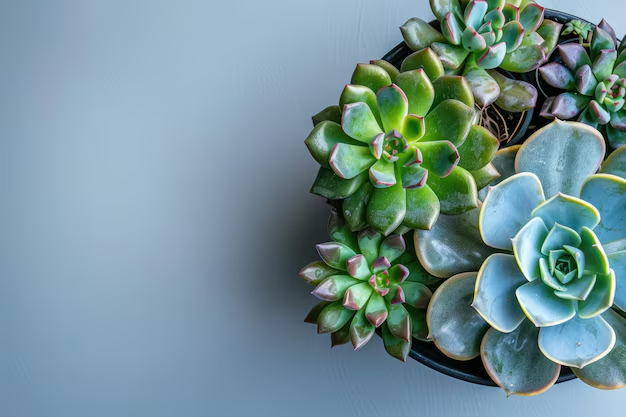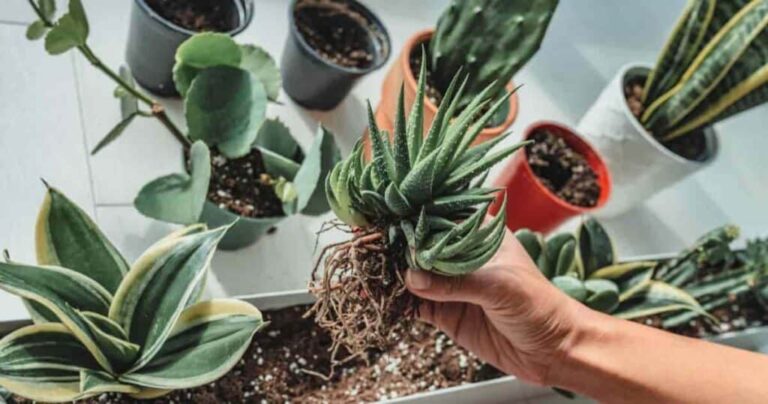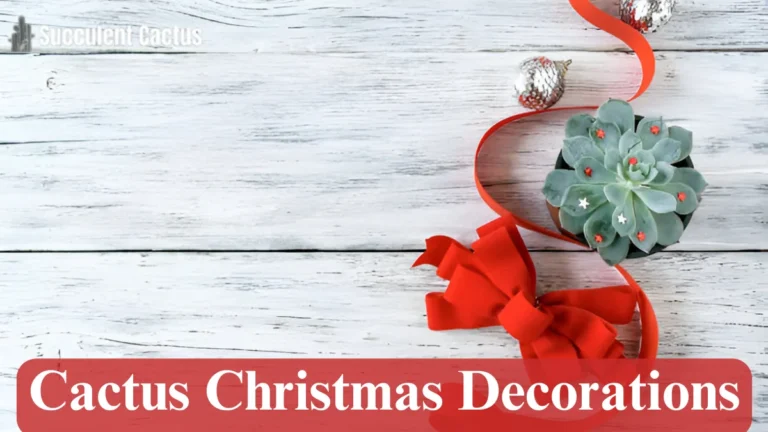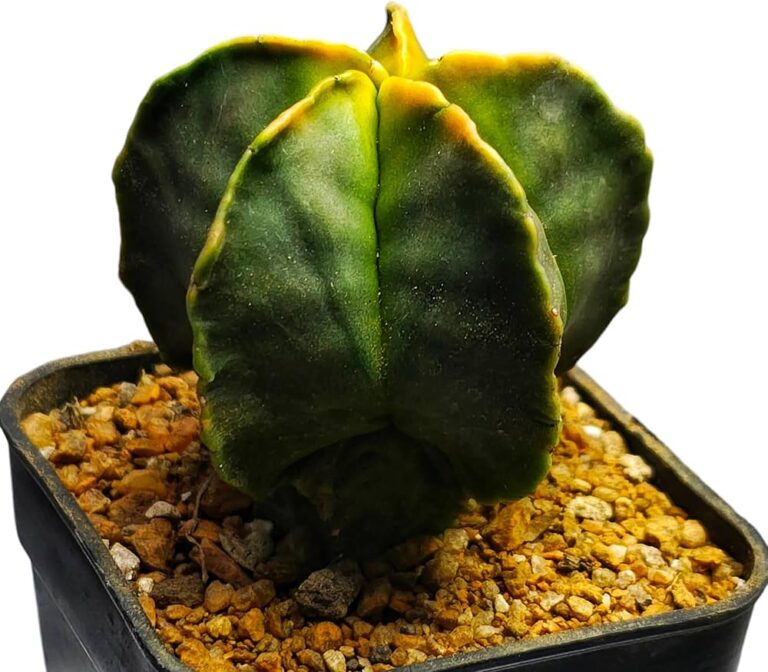Succulent Cactus Watering & Succulent Plant Watering: A Complete Guide

Succulents and cacti are famous for their low water requirements, but that doesn’t mean they can thrive without proper hydration. Understanding the right way to water these plants ensures their health, prevents issues like rot, and promotes strong growth. In this comprehensive guide, we’ll explore watering techniques, frequency, and common mistakes when watering succulents and cacti. Whether you’re a beginner or an expert gardener, this guide will help you master succulent plant watering.
Understanding Succulents and Cacti Water Needs
Succulent vs. Cactus: What’s the Difference?
While all cacti are succulents, not all succulents are cacti. Succulents store water in their thick leaves, stems, or roots, while cacti typically have spines instead of leaves and store water in their stems. This means their watering needs vary slightly.
How Succulents Store Water
Succulents have specialized cells that retain water, allowing them to survive in dry environments. Their thick leaves and stems act as reservoirs, enabling them to go weeks without water.
Why Overwatering Is a Common Problem
One of the biggest mistakes people make is watering succulents too much. Unlike other plants, succulents and cacti are prone to root rot if they sit in wet soil for too long.
Best Watering Techniques for Succulents and Cacti
The Soak and Dry Method
The best method for watering succulents is the soak-and-dry method, which mimics natural rainfall cycles in their native habitats.
- Soak the soil thoroughly until water drains from the bottom.
- Allow the soil to dry out completely before watering again.
- Avoid watering directly on the leaves to prevent rot.
Bottom Watering vs. Top Watering
- Bottom Watering: Placing the pot in a tray of water allows roots to absorb moisture without oversaturating the surface.
- Top Watering: Pouring water at the base of the plant helps prevent fungal growth but can sometimes lead to uneven moisture distribution.
Using the Right Watering Can or Spray Bottle
Choose a narrow-spout watering can to control the flow of water. Avoid misting too frequently, as this can cause shallow root growth.
How Often to Water Succulents and Cacti
Seasonal Watering Guide
Succulent water needs change with the seasons:
| Season | Watering Frequency |
| Spring | Every 1-2 weeks |
| Summer | Every 1-2 weeks |
| Fall | Every 2-3 weeks |
| Winter | Once a month or less |
Signs That Your Succulent Needs Water
- Wrinkled or shriveled leaves indicate dehydration.
- Dull, soft, or mushy leaves suggest overwatering.
- Dry, brittle stems mean the plant needs more water.
Adjusting Watering Based on Humidity and Climate
- In humid climates, succulents need less water.
- In hot, dry climates, increase watering frequency.
- If grown indoors with air conditioning, they may dry out faster.
Choosing the Best Soil for Water Retention
Why Well-Draining Soil is Essential
Succulents and cacti require fast-draining soil to prevent root rot. Regular potting soil retains too much moisture, leading to fungal issues.
Ingredients for a Perfect Succulent Soil Mix
- 50% coarse sand or perlite (for drainage)
- 40% potting soil (for nutrients)
- 10% organic matter (coconut coir or compost for water retention)
Comparing Commercial vs. DIY Soil Mix
| Soil Type | Pros | Cons |
| Commercial Cactus Soil | Ready-to-use, well-draining | May require additional perlite |
| DIY Soil Mix | Customizable for different succulents | Requires more effort to mix |
Succulent Plant Watering in Different Environments
Watering Indoor Succulents
- Ensure pots have drainage holes.
- Place in bright, indirect sunlight.
- Use the soak and dry method, but check the soil more frequently.
Watering Outdoor Succulents
- Adjust watering based on rainfall.
- Increase watering during drought periods.
- Avoid watering in the afternoon to prevent evaporation loss.
Watering Succulents in Terrariums
- Use a spray bottle instead of direct watering.
- Avoid excess moisture, as terrariums trap humidity.
- Place in ventilated areas to prevent mold.
Common Watering Mistakes to Avoid
Overwatering and Root Rot
- Overwatered succulents develop black mushy roots.
- Prevent this by letting the soil dry out completely before watering.
- Remove damaged roots immediately if rot is spotted.
Using the Wrong Pot Type
- Always use pots with drainage holes to avoid water buildup.
- Unglazed clay pots absorb excess moisture better than plastic ones.
Ignoring Seasonal Watering Needs
- In winter, succulents go dormant, needing less water.
- In summer, active growth means more frequent watering.
How to Revive an Underwatered or Overwatered Succulent
Fixing an Overwatered Succulent
- Remove the plant from wet soil.
- Trim any black or mushy roots.
- Repot in dry, well-draining soil and wait a few days before watering.
Reviving an Underwatered Succulent
- Gradually reintroduce water to avoid shock.
- Place in a humid environment for a few days.
- Avoid overcompensating with too much water at once.
When to Propagate a Dying Succulent
- If leaves are healthy, propagate by leaf or stem cuttings.
- If roots are too damaged, start fresh with new cuttings.
Choosing the Right Pot for Proper Drainage
Importance of Drainage Holes
The choice of pot directly affects how well succulents absorb and retain water. Drainage holes allow excess water to escape, preventing root rot.
- Clay or terracotta pots: Absorb moisture and improve aeration.
- Plastic pots: Retain moisture longer but may require less frequent watering.
- Glass or ceramic pots: Often lack drainage holes, making proper watering difficult.
A pot with at least one drainage hole is crucial for healthy succulent growth.
Best Pot Materials for Succulents and Cacti
Different materials absorb or retain water at varying rates:
| Pot Type | Pros | Cons |
| Terracotta | Drains well, breathable, prevents rot | Can dry out too quickly |
| Plastic | Retains moisture, lightweight | Prone to overwatering issues |
| Ceramic | Aesthetic appeal, durable | May lack drainage holes |
| Glass | Stylish for terrariums | No drainage, holds moisture |
Choosing the right pot ensures succulents receive adequate water without excessive retention.
How to Improve Drainage in Non-Draining Pots
If your favorite pot doesn’t have drainage holes, try these methods:
- Use a layer of pebbles at the bottom to reduce waterlogging.
- Water less frequently to avoid excess moisture buildup.
- Double potting method: Place the succulent in a plastic pot with drainage, then set it inside a decorative pot.
How Light and Temperature Affect Watering Needs
Sunlight Exposure and Water Requirements
More sunlight means faster soil evaporation, affecting how often succulents need water.
- Full sun (6+ hours/day): Requires more frequent watering.
- Partial shade (3-6 hours/day): Needs moderate watering.
- Low light (<3 hours/day): Requires the least watering.
Placing succulents in a sunny location prevents excess moisture retention, reducing overwatering risks.
Impact of Temperature on Succulent Plant Watering
Temperature changes directly affect moisture evaporation and plant hydration.
| Temperature | Watering Frequency |
| Above 85°F (29°C) | Water once per 5-7 days |
| 65-85°F (18-29°C) | Water once per 10-14 days |
| Below 50°F (10°C) | Water once per 3-4 weeks |
During hot summers, succulents lose moisture quickly, while in winter dormancy, they require minimal watering.
Effects of Humidity on Succulent plant Watering
- High humidity (Above 60%): Less frequent watering is needed.
- Low humidity (Below 40%): Succulents dry out faster, requiring more water.
- Indoor vs. outdoor: Indoor succulents absorb moisture from the air, requiring less water than those exposed to dry outdoor climates.
Adjusting watering based on environmental conditions helps prevent common watering mistakes.
How to Water Succulents in Different Growth Stages
Watering Newly Planted Succulents
When repotting or planting new succulents, follow these steps:
- Allow roots to dry for 24-48 hours before the first watering.
- Water lightly to prevent root shock.
- Gradually introduce the soak-and-dry method after two weeks.
Newly planted succulents establish roots better when watering is controlled.
Watering Mature Succulents and Cacti
Fully grown succulents have established root systems and require:
- Deeper watering sessions but less frequent applications.
- Consistent monitoring of soil moisture levels before watering.
- Larger pots with better drainage for healthier root development.
Watering Succulents During Propagation
Propagating succulents through leaf cuttings or stem cuttings requires a different watering approach:
- Misting daily instead of deep watering.
- Once roots appear (after 2-4 weeks), introduce light watering.
- Gradually transition to regular watering schedules after the succulent develops a strong root system.
Proper watering techniques ensure successful growth for young and mature succulents alike.
Signs of Overwatered and Underwatered Succulents
How to Identify Overwatering
Overwatering is the leading cause of succulent death. Watch for these signs:
- Mushy, translucent leaves (waterlogged tissue).
- Black, soggy roots (root rot).
- Fungal growth around the soil surface.
How to Identify Underwatering
Succulents may also suffer from insufficient water:
- Shriveled, wrinkled leaves that appear dry.
- Brittle, crispy stems losing flexibility.
- Slow growth and stunted appearance.
Fixing Overwatered and Underwatered Succulents
| Condition | Solution |
| Overwatered | Remove from wet soil, trim rotted roots, repot in dry soil |
| Underwatered | Increase watering frequency, soak soil deeply |
Understanding these signs helps maintain succulent health and prevent watering mistakes.
Using Rainwater, Tap Water, and Filtered Water for Succulents
Is Tap Water Safe for Succulents?
Tap water often contains chemicals like chlorine and fluoride, which can harm succulent roots over time.
- If using tap water, let it sit for 24 hours to allow chlorine to evaporate.
- Avoid softened water, which contains high sodium levels that damage plant roots.
Rainwater vs. Filtered Water for Succulents
| Water Type | Benefits | Drawbacks |
| Rainwater | Rich in natural minerals | Can collect pollutants if stored incorrectly |
| Filtered Water | Removes harmful chemicals | More expensive than tap water |
Using rainwater or filtered water results in healthier, more vibrant succulents.
DIY Watering Solution for Healthier Succulents
For a nutrient boost, mix:
- 1 gallon of filtered water
- 1/4 teaspoon of Epsom salt (magnesium boost)
- 1 teaspoon of apple cider vinegar (adjusts pH)
Watering succulents with clean, pH-balanced water enhances their growth and longevity.
FAQs About Succulent Plant Watering
1. What is the best way to water succulents? The soak-and-dry method is the best. Water thoroughly, then allow the soil to dry completely before watering again.
2. Can I water my succulents with ice cubes? No! Ice cubes can shock the roots and lead to root damage. Always use room-temperature water.
3. Why do my succulents’ leaves turn yellow? Yellow leaves are a sign of overwatering. Allow the soil to dry out completely and adjust your watering schedule.
4. Should I mist my succulents? Misting is not necessary for most succulents and can lead to fungal growth. Stick to deep watering instead.
5. How do I water succulents in winter? Reduce watering to once a month or less since succulents go dormant in colder months.
By following this guide, you’ll become an expert in succulent and cactus watering, ensuring your plants stay healthy and beautiful! 🌵💦
Conclusion
Mastering succulent cactus watering and succulent plant watering ensures your plants remain healthy, vibrant, and thriving. By choosing the right pot, adjusting watering to seasons, and using proper soil, you can prevent common issues like overwatering and root rot.
Remember: The key to successful watering is understanding the needs of your specific succulent variety and adapting to environmental conditions. By applying these techniques, your succulents will continue to flourish for years to come!






